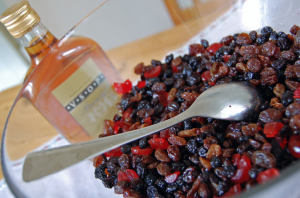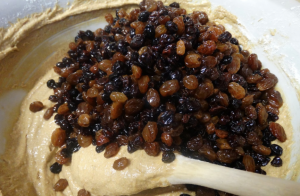In our last blog, we looked at how to gather the basic ingredients, i.e. the right keywords, for your online content. Think of these in terms of the eggs, flour and sugar for your Christmas cake. They are essential, but the chances are your competitors will be using many of the same basic ingredients. It’s what you make (or bake) with the keywords that counts. Below are our tips for raising your content a notch higher than other offerings.
Go easy on the keywords
To get readers, it’s important to focus on keywords and phrases, but producing content that’s obviously geared towards search engines will put readers off, in the way that your cake will be unpalatable if all you’ve been too heavy-handed with the cloves. Your writing should be subtle and organic; use your keyword phrase enough so that it’s recognized as the topic but not so much that your readers notice. If you don’t want to leave a bad taste in you reader’s mouth, use your key phrases sparingly.
Marinade your marketing ideas
Christmas cake recipes suggest soaking your dried fruit in anything from tea to orange juice to whisky, from overnight up to a year! Whilst we know that time to let ideas stew is is a luxury many marketers don’t have, we’d recommend letting your blog/post ideas marinade for a little while. Decide on a topic, make some notes and give it time to develop before you write your first draft. This can bring out the flavour of your idea and increase the depth of your original idea.
Always have your customers’ tastes in mind
If you’re baking a Christmas cake for children, you’d be wise to go easy on the brandy, and if your husband is lactose-intolerant, he won’t thank you for serving up a cake with lashings of cream. Always write with your target audience in mind: what do they like? What would put them off? Your writing style should be influenced by your target market. By its very nature, online content is a good deal less informative and more familiar than printed business material, but be careful not to sicken your readers with too many bad jokes or a cloyingly sweet tone.
Check the consistency
All of your written content should support your brand story: if you don’t have one, now’s the time to put it in place! What does your cake say about you? Will you add a pinch of chilli powder to deliver a twist on a traditional theme in line with your uniquely spicy branding? Perhaps your brand is all about reliability, no surprises required, honest and reassuring like good old pub grub? Whatever it is, you should have your brand story in mind when you’re creating content, checking regularly to ensure that it’s neither too light and fluffy or too heavy and dark for your readers, keep it consistent across all platforms.
Don’t be bitter
Candied peel is fine in moderation, but beware of allowing bitterness into your blogs! Your online presence should be helpful, informative and friendly; the web is no place to be openly criticising your competitors or making barbed remarks about others. Keep a bit of festive spirit all year round and you won’t go too wrong.
Stick to the recipe
It’s all very well experimenting in the kitchen, but if you start off making a Christmas cake and switch half way through to a recipe for lemon meringue, you’re going to have a mess on your hands. Similarly, allowing your content to be sidetracked by other topics can make it difficult to follow, with readers unlikely to return for second helping. Set out the objective and follow that line through to the end. Jot other ideas in a notebook for other blogs. These will become recipes to follow for future dishes!
So, time to get mixing, but remember:
- Go easy on the keywords – focus on your consumers, not on search engines
- Marinade your marketing ideas – give your topics time to develop
- Always have your customers’ tastes in mind –
- Keep checking the consistency – content should be in line with your brand’s
- Don’t be bitter – give advice, not gossip
- Stick to the recipe – stay focused on the objective



